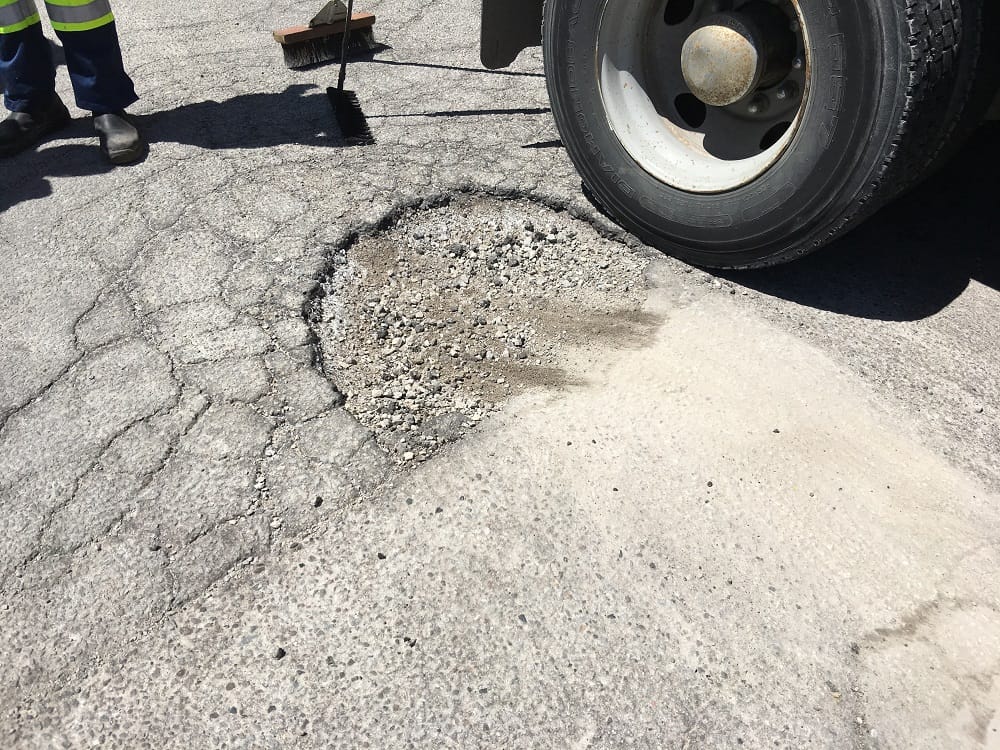The safety of residents and visitors both inside and outside of a condominium building is the number one priority of owners. Access roads, parking lots, and walkways must be inspected and attended to with asphalt repairs as needed.
Time, weather conditions, traffic flow, and other factors all play a role in the lifespan and condition of asphalt paving surfaces. To prevent injuries and accidents, the Condominium Authority of Ontario (CAO) demands all condo building owners must abide by Section 89 of the Condo Act.
“All condo corporations are generally responsible for repairing damage to common elements and standard unit elements. Common elements may include parking, hallways, elevators, amenities, etc.”
As existing and potential signs of damage to paved areas can go undetected by the untrained eye, having a professional pavement maintenance company regularly inspect and survey the property is crucial for the safety and protection of all who access the property.
The Most Common Signs of Pavement Damage
So, what signs should condominium owners look for when surveying their property? Here are 10 of the most common signs of pavement damage.
Potholes
Potholes are every driver’s worst enemy. Commonly seen during freezing and thawing cycles, these holes form as water enters the asphalt through cracks in the surface and expands and contracts due to temperature changes. Rainfall and melting ice and snow can seep into cracks of the asphalt to penetrate the subbase, allowing water to collect.
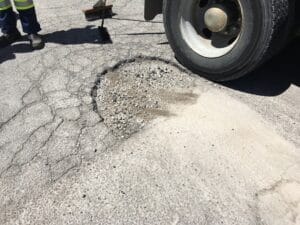
Cracks
Asphalt crack repair and crack sealing are tools of the trade when small or large cracks begin to form on the pavement. Signs of alligator cracking, or fatigue cracking, are seen on surfaces with the heaviest traffic flow. Cracks are usually the first stage of pothole formation and require immediate repair to prevent water and fluids from seeping into the asphalt and subbase.
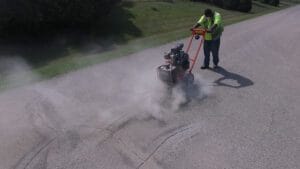
Sinkholes and Depressions
Small and large depressions on the surface of the asphalt can lead to serious sinkholes if not addressed. These indentations can be noticeable after a rainfall as they can fill with water. Sinkholes and depressions can lead to severe pedestrian injury or vehicle accidents due to hydroplaning during the rain. They are linked to poorly compacted materials in the subbase during installation of the pavement.

Faded Line Markings
A quick visual inspection of the pavement can usually indicate whether line markings are faded and/or discoloured on the asphalt itself. Over times regular wear and tear, as well as harmful UV light can diminish the lines. Faded line markings can pose a safety risk to guests and tenants, especially if they affect traffic flow or parking situations.
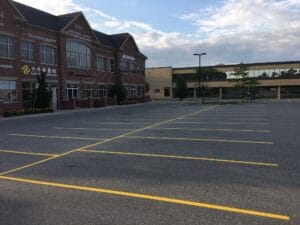
Surface Deterioration
The surface of the asphalt can deteriorate over time and can be caused by an inadequate subbase. Extreme environmental conditions (e.g., snow, hail, and heavy rain fall), vehicle fluids, and the shifting of the underground due to frost can all cause distortion and deformation of the paved surface.
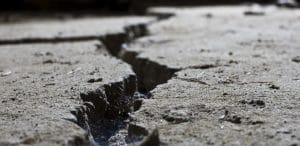
Drainage Issues
Water pooling water on the pavement and overflowing drains are indications of a poor drainage system within or alongside the paved areas. The water on the surface of the asphalt can cause severe damage to the underlying foundation of the paved surface and can extend to the sides where crumbling of the asphalt can occur.

Raveling
The small pieces of loose gravel and dust laying on the surface of pavement is the result of raveling. This type of damage occurs when the asphalt aggregates become unbonded from each other. It is caused as the binder ages or from inadequate compaction during the application of the asphalt.
Rutting
Rutting offer appears in the wheel paths of an asphalt surface as a result of heavy vehicular traffic. This depression can be created by heavy weighted traffic, improper compaction during installation, or due to low quality aggregates in the asphalt mixture and can get deeper and bigger over time.
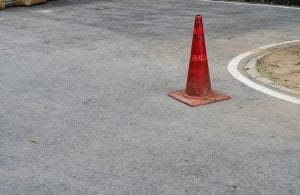
Shoving
This form of asphalt damage resembles ripples or waves across the surface of the asphalt. It can be caused by the traffic flow, poor quality of asphalt, improper installation, or excessive moisture trapped within the asphalt.
Tips for Inspecting Pavement for Damage
- Schedule Regular Inspections: Regularly scheduled inspections of the pavement surfaces and edges is essential to ensuring the integrity of the asphalt remains intact.
- Walk the Entire Area: It takes time and patience to conduct a proper inspection of the paved areas. Walking the entire area will ensure no minor issues are overlooked and what areas may require asphalt removal and replacement.
- Look for Visible Signs of Damage: During the walkabout inspection, be on the lookout for signs of cracking, potholes, indentations, sinkholes, and faded markings.
- Observe Drainage and Water Flow: Observe the surface of the asphalt for any water pooling or signs of poor drainage. Allowing water to sit on the asphalt can cause severe damage to the surface, subbase, and edges.
- Seek a Professional Assessment: The condition of the asphalt can appear to be in good shape to the untrained eye. A professional maintenance company can identify the signs of damage and whether the property requires repair or asphalt resurfacing and overlay.
Contact Sure-Seal For Your Pavement Maintenance Services
For asphalt commercial sealcoating, pavement crack sealing, repair, replacement, and maintenance services, allow Sure-Seal Pavement Maintenance Inc. to be the solution. We are the leading commercial pavement maintenance contractor for condominium property managers and property owners throughout the GTA.
Call us at 416-PAVEMENT, email us at info@suresealpavement.com, or fill out our contact form here.




